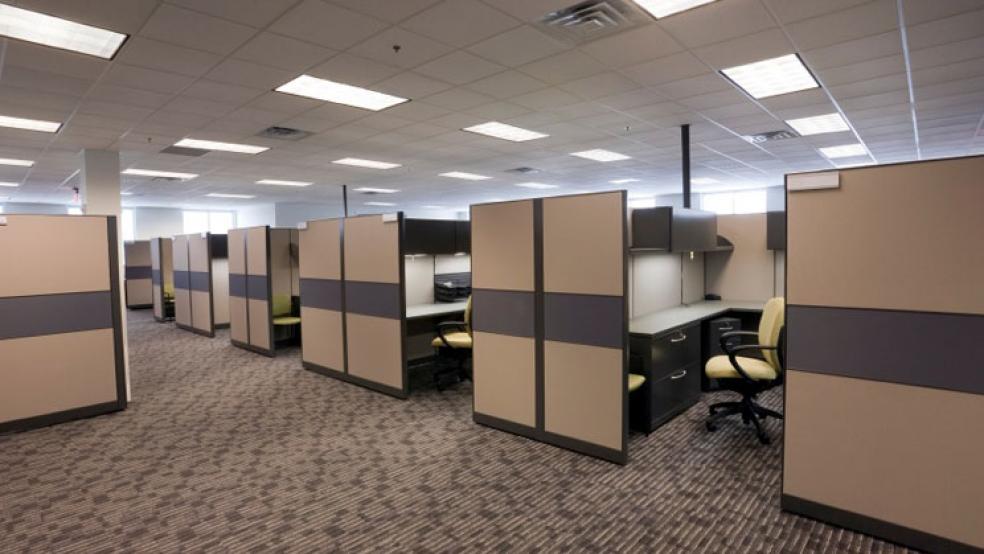Young people entering the workforce today aren't just digitally inclined, they're also not too keen on cubicles, apparently.
More than half of Millennials prefer working in an office with an open floor plan than one with cubicles and private offices, according to a 2014 Coldwell Banker Commercial Affiliates survey. By contrast, less than half of the Gen Xers and Boomers surveyed prefer an open floor plan.
Related: How Millennials Could Damage the U.S. Economy
"Mobile people end up where they want to be, not tethered to a desk where they have to be," says Ricky Biddle, turnstone industrial designer.
To address this changing view of the workplace, turnstone, a brand by the furniture company Steelcase, recently showed off its "office of the future," complete with a mix of home and office furnishings. The model office--which overlooked Central Park (not a bad touch)--also housed lounges, colorful upholstery and seats designed after exercise balls. With the idea that collaborative workplaces can spur creativity and keep young people engaged, the company is hoping to make inroads with entrepreneurs.
Since you're likely interested in knowing how to keep millennials happy and engaged, here are four office design tips bound to make them happier and more productive:
1. Big ideas come to those who move.
Inspiration is more likely to hit you while you're up and about. And the simple act of walking stimulates creative juices. The company took a page from the book Fidget Focus, which found that moving a little increases concentration in designing products like the Campfire Footrest, which can be used to shift weight while standing. The brand also designed a treadmill desk to accommodate thinking on your feet.
2. Plan for chance encounters.
Most of the big breaks people get in their lives probably happen outside the office. Cafes are breeding grounds for good ideas because they encourage casual conversation through their mellow atmosphere. "Some breakthroughs happen in impromptu settings, not meetings," says Biddle. Instead of waiting for the next coffee run, creating open spaces at work can help generate new ideas and boost productivity.
3. Great postures come in many forms.
Having better posture is not only about keeping your back straight. Instead, people are more productive when in a variety of positions, says Brian Shapland, general manager of turnstone. For this reason, the company created furniture that allows people to work while standing, sitting or lying down. Informal work settings may not be right for everyone though. Accounting firms, for example, may not be as willing to make the transition to these workplace settings.
4. Use Space to start conversations.
Office furnishings, when used correctly, can encourage collaboration. Noticing that tables with umbrellas tend to draw people together, turnstone applied the idea that low hanging ceilings create gathering spots in designing the Big Lamp, a drum-shaped, hanging light fixture that mimics sitting around a campfire and exudes coziness. Turnstone's Campfire line also recently came out with rearrangeable furniture like the Slim Table, which doubles as a bench and has built-in power outlets. "Millennials and Gen Y want access to continuous coaching, so the idea of a closed office... doesn't really work," says Shapland.
Top Reads from The Fiscal Times:

